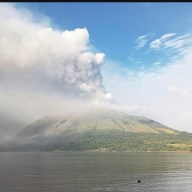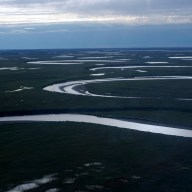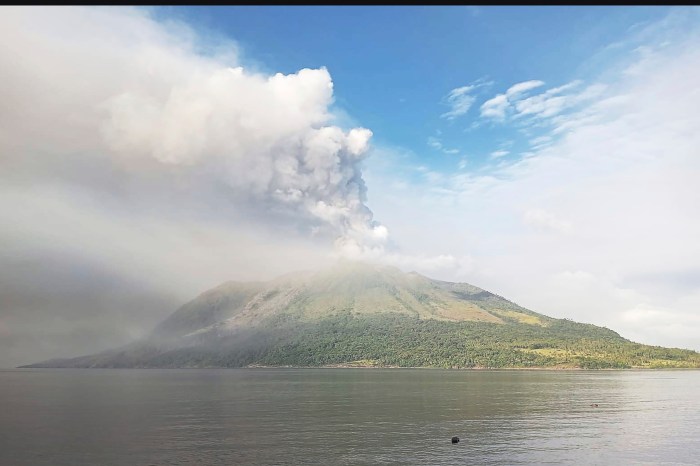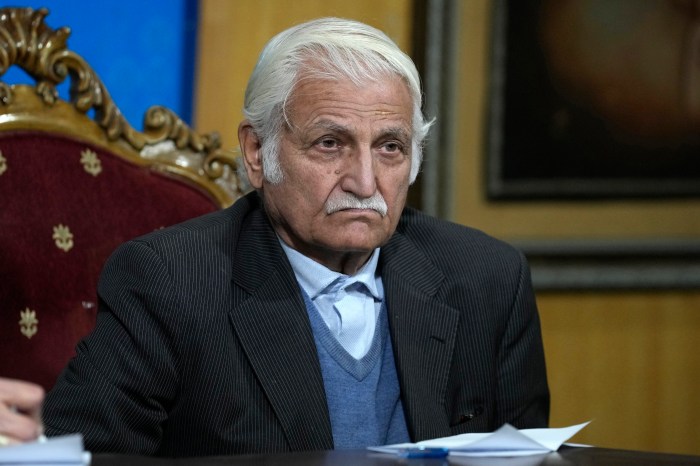FORT MCMURRAY, Alta. – Hundreds of migrating ducks are dead or dying after landing on a tailings pond owned by Syncrude Canada Ltd. and ice surrounding the small lake full of toxic sludge is hampering rescue efforts.
Alberta Premier Ed Stelmach was visibly angry Tuesday as he questioned why noise-making canons were not deployed to scare the waterfowl away from the pond filled with oilsands wastes.
“The problem here is that there’s ice around the pond and you can’t just push a boat in (to rescue some of the birds),” said the premier. “The company will have to lower the boats by crane into the water.”
Company and government officials estimate there are roughly 500 birds trapped in the toxic pond in a disaster that has never before been witnessed in the northern Alberta oilsands region.
“Many of them will die as a result of this incident,” said Syncrude spokesman Alain Moore. The birds landed on the pond Monday.
Moore said the company is working with Alberta Fish and Wildlife in hopes of rescuing some of the birds.
“Our CEO is taking a personal commitment to lead this investigation team because it’s definitely a top priority at Syncrude,” he said.
But Environment Minister Rob Renner told The Canadian Press late Tuesday that it’s now looking doubtful that any of the birds can be saved.
Renner explained that the surviving birds are diving under the toxic water when approached, making recovery nearly impossible.
“It’s not looking good,” said the minister. “But we’re doing what we can.
“This is a tragedy and this is unacceptable and we’re going to do everything within our power to find out why it occurred and more importantly, to prevent it from occurring again.”
Garry Keller, director of communications for federal Environment Minister John Baird, said the department has asked Environment Canada enforcement officials “to take immediate action to investigate this serious matter, including whether any laws were broken.”
He said federal officials would work in conjunction with the provincial investigation.
“The current focus is on preventing any further oiling of migratory birds, and assessing if rehabilitation efforts can be conducted,” said Keller.
A Syncrude release late Tuesday afternoon said noise-makers are used from spring to fall to deter birds from entering the ponds, but a recent heavy snowfall delayed the deployment of these devices.
“This is the first time a large flock of birds has landed on a settling basin in Syncrude’s 30 years of operation,” said the release.
A release by Alberta Environment warned of possible fines of up to $1 million if Syncrude did not have equipment in operation to scare birds away from the toxic pond.
But Renner refused to speculate on whether his department’s investigation would take into account that heavy snowfall prevented the noise-making cannons from being deployed.
“That’s why we investigate,” said the minister. “So I won’t comment until the investigation is completed.”
Stelmach said he’s concerned that Syncrude did not report the incident and the government was alerted by a tipster who called Monday night.
“If something has happened of this sort, then we feel that the company is obligated to report to the minister of the environment,” he said. “It’s a condition of the licence.”
Greenpeace Canada issued a news release Tuesday calling the incident “yet another example of the deadly implications of Alberta’s rampant tarsands development.”
“Today we have 500 more canaries and 500 more reasons why we need to put the brakes to this project,” said spokesman Mike Hudema. “The fact that this devastating incident wasn’t reported by Syncrude begs the question of how many other incidents have been quietly covered up to safeguard their image.”
He said the incident also speaks to the “inadequacies of the government’s ability to monitor even the most basic environmental safeguards put on tarsands development” and suggested the province’s investigation should look at its own close relationship with the oil industry.
The waterfowl disaster comes as deputy premier Ron Stevens is in Washington trying to convince U.S. lawmakers to ignore the view taken by Greenpeace and other environmental groups that Alberta’s oilsands projects have been developed at a huge cost to the environment.
The Americans are developing a law that will restrict imports of “dirty oil” that produce more greenhouse gas emissions than other sources. Environmentalists say that should include the synthetic crude produced from the tar-like bitumen in northern Alberta.
Stevens is trying to get the oilsands exempted from this law, but he’s been dogged by environmentalists who took out an ad in a Capitol Hill newspaper that has the maple leaf oozing oil.
Alberta’s Opposition Liberals also pounced on the incident at the Syncrude tailings pond, calling it “ironic” given the province’s plans to spend $25 million on a public relations campaign to improve the world image of the oilsands.
Liberal environment critic David Swann said this level of spending is an outrage. He described it as “greenwashing.”
“Hiding and denying (the facts) and paying for a greenwashing campaign is simply going to inflame more people,” said Swann, who described the oilsands as “the highest emitter of carbon anywhere in the world.”
Last week, the premier announced he will travel later this year to southern California and central Europe to dispel the message being sent by Greenpeace and the Sierra Club that rapid oilsands development is an environmental disaster.
But Stelmach’s speech was disrupted by Greenpeace protesters who dropped from the ceiling in climbing harnesses and unravelled a banner slamming the premier for adopting a policy that will allow total oilsands emissions to increase for a least a decade.


















